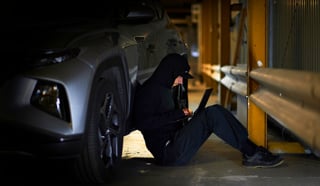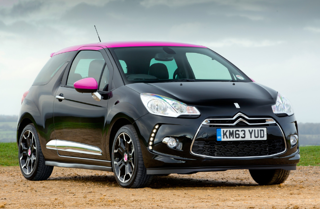Arval puts education and training at the heart of its approach to fleet safety, employing a raft of initiatives aimed at driving down risk.
It has developed its own in-house road safety programme called Drive4Life, which is tailored and delivered to hundreds of Arval employees each year by fleet and road safety manager Tracey Scarr.
The programme raises awareness of the harsh realities of poor driving and gives employees - whether driving is a core function of their role or not – the tools that they need to reduce their road risk.
Scarr says: “There are many different aspects to making a sustainable safety programme, but whatever measures you introduce must be right for your business.”
Operating a car fleet of more than 300 vehicles, Arval has employed a combination of training, intervention and robust fleet management policies which continue to pay dividends.
It has set Key Performance Indicators (KPIs) to measure incidents, at-fault accident ratios and driving licence profiles, enabling it to track improvements and measure its effectiveness.
For example, the company reported an incident rate of 40% in 2007, but thanks to its focus on safety that reduced to 18% in 2011.
Parking, manoeuvring and damage while parked made up 43% of those incidents in 2007, but as a result of targeted training they had dropped to just 11% within three years.
Scarr says: “Through post crash investigations, continued driver education and driver training, where necessary, we have been able to demonstrate a significant improvement in the employees’ awareness of safe driving techniques and practices.”
Fleet News: Do you think safety needs to be embedded into the culture of a company to realise success?
Tracey Scarr: A business can introduce a range of measures that will have an impact on safety and not have it embedded into its culture.
However, I don’t think that it can be sustainable and it certainly won’t give you the long-term success you’re looking for if it isn’t.
For us at Arval, safety has to apply to everybody, not just those people who drive for work, and it has to come from the top – boardroom buy-in is crucial.
It isn’t just about somebody who drives a van or a truck, or a car for 30,000 miles a year; it’s about everybody we employ.
That’s not to say you don’t target certain people in different ways, but it has to be about everybody and not doing it because you have to; not doing it because of a legal requirement; doing it because it’s the right thing to do.
We want our employees to be safe not only when they’re driving for work, but also when they’re driving with family and friends. It’s about providing them with skills for life as well as work.
FN: What safety initiatives have you introduced at Arval?
TS: First of all, we’ve made sure we’ve got safe cars. We promote safety-based technology with ESC and ABS mandatory, along with reversing sensors.
Drivers can only select vehicles with a five star EuroNCAP rating and we make a point of talking about what these different safety measures actually do and mean.
Our drivers also carry out a formal risk assessment programme called Drive4Life, which is supported with additional ongoing awareness workshops, communications and road safety initiatives throughout the year.
The Drive4Life programme is compulsory for all company car drivers and employees that drive on business.
Online driver risk assessments and driver training needs are formally revisited every two years to ensure drivers receive the necessary training based on their exposure to risk.
Training is tailored to an employee’s risk rating once the online risk assessment is completed.
They will be placed into one of three categories: high risk, for one-on-one, on-the-road tuition; medium risk, to be enrolled on a training programme which includes a ‘safe culture’ workshop; and low risk, for an ongoing programme of e-learning, information and education.
Communication is crucial. We share the results of our performance; we tell the drivers how many incidents we’re having; what type of incidents they are and what are the costs involved.
It’s important that we engage with drivers fully so that they can understand, and can have confidence in, any safety initiative we introduce.
FN: How has the company and drivers benefited from these safety initiatives?
TS: It makes good business sense to invest in safety. Times are hard for everybody, but you can make a difference to your bottom line by investing in safety.
We have seen a massive reduction in the number of incidents, from 40% in 2007 to 18% last year. I’d still like less but they do happen and some are out of our control.
Nevertheless, the direct net cost savings have probably been in the region of £50,000 in the past three years.
Subtle changes have included a 60% reduction in speeding offences from 2010 to 2011.
Of the 750 people insured to drive on company business 95% have zero points on their licence, with 3% having three points and the remaining 2% six points – nobody has higher than six.
That’s a real achievement for us and a big benefit for the individual as well as the company.
It’s meant insurance premiums have fallen and led to our insurance company giving us £5,000 to invest in safety initiatives at a time when some fleets are struggling to get insured.
FN: Why do you think it’s important to share best practice in this area?
TS: Safety is not competitive; many things are in the world of work, but safety isn’t one of those things.
You also don’t have to re-invent the wheel if there’s somebody out there doing something really well that could work for you.
I have benefited massively from learning from other people.
My journey began six years ago, sitting in a conference as an inexperienced fleet manager listening to a range of people who were prepared to share with me how they’d succeeded in certain areas.
It spurred me on to launch a safety forum in 2008 for Arval’s corporate customers, which we continue to hold on a quarterly basis.
It provides the ideal platform for fleets to share any problems and possible solutions with each other, while expert speakers can offer insight and advice on their chosen subject.
As a result, we have built strong relationships with safety organisations such as Brake, RoadSafe and the local fire and rescue service.
By working with these groups and other fleets we can build information and ideas which allows us to make our fleet as safe as possible.
FN: How do you intend to maintain this focus on safety?
TS: We need to continue to keep safety at the top of our agenda and not let up in the quality and content of the safety-related messages we give to our drivers.
This year will see more risk management training, with a full-year of risk assessments and training programmes planned as part of our two-yearly Drive4Life renewal.
We’re also reviewing our insurance and health declaration, which will involve us asking some more specific questions around health to draw out any sleep apnoea concerns or eyesight issues, just to understand whether there’s anything more we need to do for our drivers.
There will also be more family and friends sessions.
But perhaps most significantly, I’ll keep sharing best practice and learning from what other fleets are doing, because it’s important your approach to safety remains fresh if you want to succeed and maintain that success.
























Login to comment
Comments
No comments have been made yet.